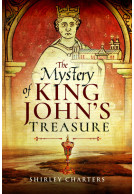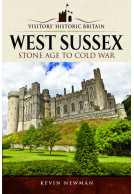The Holy Land in the Era of the Crusades (Hardback)
Kingdoms at the Crossroads of Civilizations, 1100–1300
Imprint: Pen & Sword History
Pages: 384
Illustrations: 20 colour & black and white illustrations
ISBN: 9781526787590
Published: 6th May 2022
Star review
"This volume is an ideal introductory work for both the general reader and students looking to get a solid overview of the period and to understand crusader society beyond the commonly presented military paradigm."
- Dr Stephen Donnachie; Royal Studies Journal, Swansea University
(click here for international delivery rates)
Order within the next 10 hours, 47 minutes to get your order processed the next working day!
Need a currency converter? Check XE.com for live rates
The Near East in the era of the Crusades was home to diverse populations Orthodox and Latin Christians, Shia and Sunni Muslims, Jews and Samaritans. It was the meeting-point for Arab, Turkish, Byzantine and Frankish culture, the latter itself a mixture of Western traditions adapted to circumstances in the crusader states by the Europeans who had settled in the Holy Land.
While the Crusades have become a synonym for brutality and bigotry, the crusader states represented a positive example of harmonious coexistence across two centuries. Likewise, while scholars from a wide range of disciplines including archaeology, art history, and medicine have shed light on diverse aspects of the crusader states, to date there is no single introductory source that provides a comprehensive overview of these unique states as a starting point for the uninitiated. The Holy Land in the Era of the Crusades aims to fill this gap while correcting common misconceptions by bringing together recent scholarly research on a range of topics to create a comprehensive description. It covers the history, demography, state institutions, foreign policy, economy, art, architecture, and lifestyle of the people who lived in the crusader states in the period from 1100 to 1300. It is organized in two main parts: a chronological historical overview, and a topical discussion of key features of these unique kingdoms. An additional, final chapter describes the rise and fall of the House of Ibelin to give the entire history a human face.
The Holy Land in the Era of the Crusades would make an ideal textbook for undergraduates while offering hobby historians an introduction to the crusader states with tips for further research.
As featured
De Re Militari - The Society For Medieval Military History
Schrader has done an excellent job of crafting a single volume history of the Crusader States that covers so much ground in sufficient detail so succinctly. This volume is an ideal introductory work for both the general reader and students looking to get a solid overview of the period and to understand crusader society beyond the commonly presented military paradigm.
Dr Stephen Donnachie, Independent Scholar
Exceptionally informative and an impressive work of meticulous scholarship, "The Holy Land in the Era of the Crusades: Kingdoms at the Crossroads of Civilizations, 1100 - 1300" is an ideal textbook for undergraduates and non-specialist general readers with an interest in the subject, while offering historians and scholars with an introduction to the crusader states with tips for further research.
Midwest Book Review
Read the full review [link=
http://www.midwestbookreview.com/wbw/aug_22.htm#WorldHistory]here[/link]
'In her introduction to The Holy Land in the Era of the Crusades, Helena P. Schrader, author of several historical novels and popular history books, notes that this book “is designed to provide hobby historians with an easy-to-read, affordable overview of the crusader states.” In fact, being broad in its scope, readable, and thoroughly researched, her book goes well beyond this aim. It dispels several of the misconceptions that still so often appear in the more popular accounts of the crusades and the Latin East, and sometimes in academic works as well. The outcome is an attractive and indeed affordable volume that, while certainly an appropriate read for the layman, would also not go amiss as an introduction for students of the field. Most of the books on the crusades that are directed towards the general audience, lean heavily on military aspects and deal almost exclusively with major historical events and the principal and well-known historical figures. Schrader’s book, however, although it does in a lengthy section cover the principal events from the First Crusade to the fall of Latin Syria in 1291, is not, after all, about the crusades. Rather, as the title shows, it is about the Holy Land under Frankish rule, about the kingdom of Jerusalem, and to a degree about the other crusader states. In this regard, this book does a real service, by introducing the broader public to aspects of this important and fascinating historical period that are sometimes distorted, but more often entirely overlooked. For example, Schrader covers such subjects as the judicial system, administration, religious institutions, diplomacy, agriculture, commerce and industry and the arts. Schrader includes with her text useful informative tools, including well-drawn maps, some rather more basic city plans, genealogical tables, a detailed historical timeline, and up-to-date bibliographical material. The outcome is a commendable volume that may correct some misconceptions and is certain to enlighten its readers to aspects of the topic that are less well known.'
Professor Adrian Boas, Founder of the Department for Crusades Archeology at the Hebrew University in Jerusalem, and former President of the Society for the Study of the Crusades and the Latin East
About Helena P Schrader
Helena Schrader earned a PhD in History from Hamburg University in Germany before becoming a US diplomat in Africa and Europe. She has published three popular history books and is an award-winning novelist, whose novels set in the crusader states have won a total of 15 literary awards to date.
The Powerful Women of Outremer Forgotten Heroines of the Crusader States (Hardback)
In the mild climate of the Mediterranean, a rare blossom once bloomed: a prosperous, urbanised society inhabited by various ethnic and religious groups living harmoniously together for nearly two-hundred years. At the apex of this society, ruled a feudal elite notorious for its wealth and love of luxury. It was composed of politically savvy, diplomatically adept, well-educated and multilingual men – and women. These women played an astonishing and indispensable role in shaping the character of their unique society. They were ruling queens, independent barons, nuns and pilgrims. They were merchants…
By Helena Page SchraderClick here to buy both titles for £35.00















